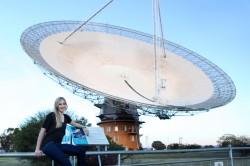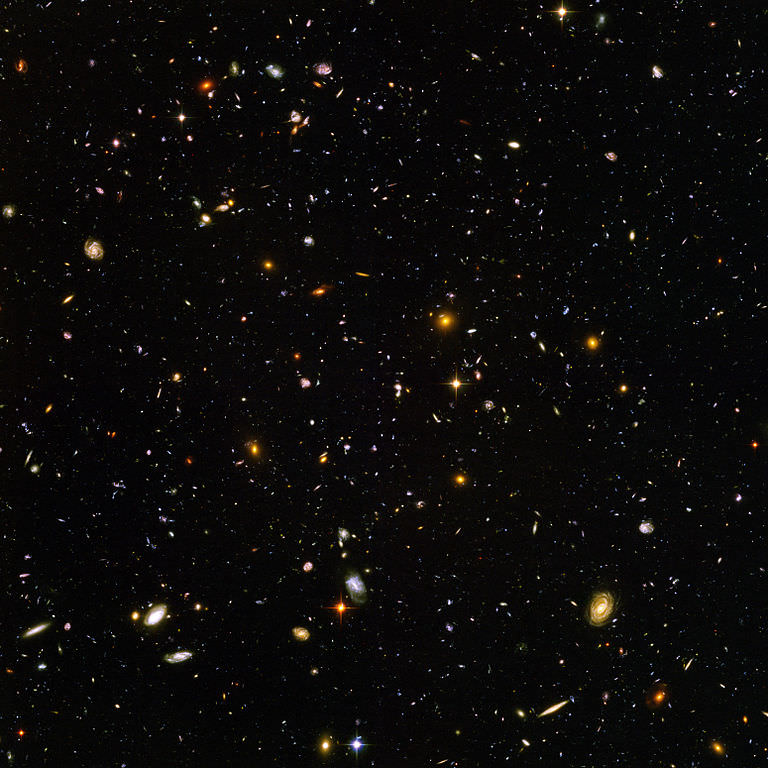Very similar to stacking astronomy images to achieve a better picture, researchers from the International Centre for Radio Astronomy Research (ICRAR) are employing new methods which will give us a clearer look at the history of the Universe. Through data taken with the next generation of radio telescopes like the Square Kilometer Array (SKA), scientists like Jacinta Delhaize can “stack” galactic signals en masse to study one of their most important properties… how much hydrogen gas is present.
Probing the cosmos with a telescope is virtually using a time machine. Astronomers are able to look back at the Universe as it appeared billions of years ago. By comparing the present with the past, they are able to chart its history. We can see how things have changed over the ages and speculate about the origin and future of the vastness of space and all its many wonders.
“Distant, younger, galaxies look very different to nearby galaxies, which means that they’ve changed, or evolved, over time,” said Delhaize. “The challenge is to try and figure out what physical properties within the galaxy have changed, and how and why this has happened.”
According to Delhaize a vital clue to solving the riddle lay in hydrogen gas. By understanding how much of it that galaxies contained will help us map their history.
“Hydrogen is the building block of the Universe, it’s what stars form from and what keeps a galaxy ‘alive’,” said Delhaize.
“Galaxies in the past formed stars at a much faster rate than galaxies now. We think that past galaxies had more hydrogen, and that might be why their star formation rate is higher.”

“What we are trying to achieve with stacking is sort of like detecting a faint whisper in a room full of people shouting,” said Delhaize. “When you combine together thousands of whispers, you get a shout that you can hear above a noisy room, just like combining the radio light from thousands of galaxies to detect them above the background.”
However, it wasn’t a slow process. The researchers engaged CSIRO’s Parkes Radio Telescope for 87 hours and surveyed a large region of galactic landscape. Their work collected signals from hydrogen over a vast amount of space and stretched back over two billion years in time.
“The Parkes telescope views a big section of the sky at once, so it was quick to survey the large field we chose for our study,” said ICRAR Deputy Director and Jacinta’s supervisor, Professor Lister Staveley-Smith.
Stacking up a clearer picture of the Universe from ICRAR on Vimeo.
As Delhaize explains, observing such a massive volume of space means more accurate calculations of the average amount of hydrogen gas present in particular galaxies at a certain distance from Earth. These readings correspond to a given period in the history of the Universe. With this data, simulations can be created to depict the Universe’s evolution and give us a better understanding of how galaxies formed and evolved with time. What’s even more spectacular is that next generation telescopes like the international Square Kilometre Array (SKA) and CSIRO’s Australian SKA Pathfinder (ASKAP) will be able to observe even larger volumes of the Universe with higher resolution.
“That makes them fast, accurate and perfect for studying the distant Universe. We can use the stacking technique to get every last piece of valuable information out of their observations,” said Delhaize. “Bring on ASKAP and the SKA!”.
Original Story Source: International Centre for Radio Astronomy Research.


Hmmm… She’s really cute too!
Yeah man… that’s one good looking dish!
Small correction to paragraph 9 needed, quoting from original story source:
“………collecting signals from hydrogen over an unmatched volume of space and up to two BILLION years back in time. “
From the description this appears to be a type of 2-d or maybe 3-d (if red shift or z is taken as a spatial dimension) Fourier transform which picks out the hydrogen frequency.
LC
Will these data be used to create an overlay on say the top image?
Question: when we look back in time to early epochs in the universe do the galaxies seem closer together, more dense before space expanded?